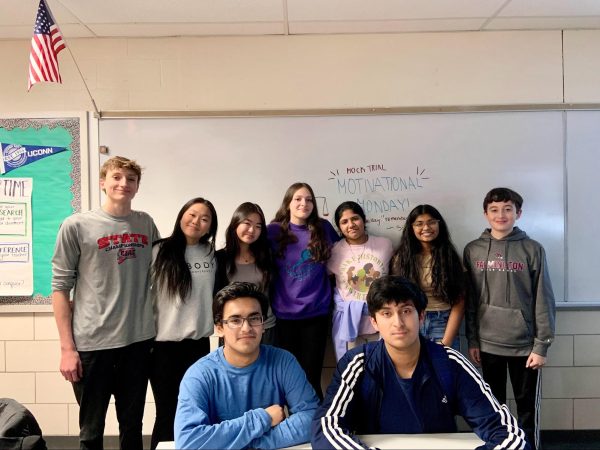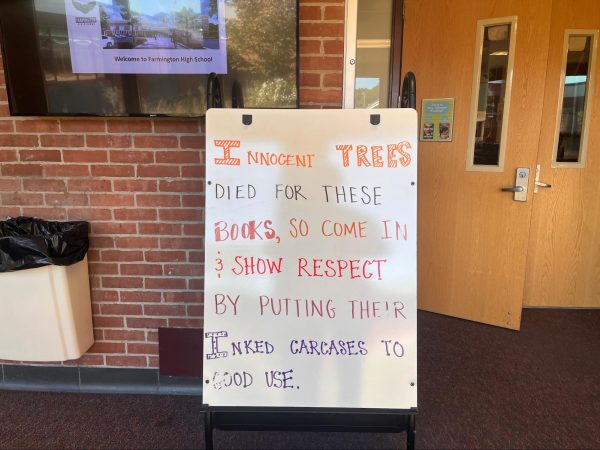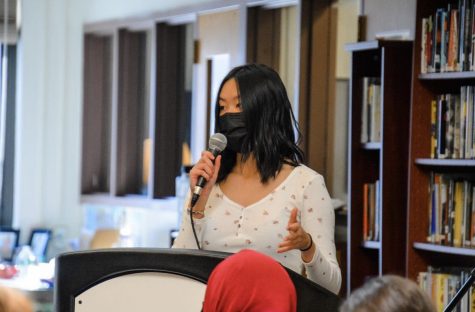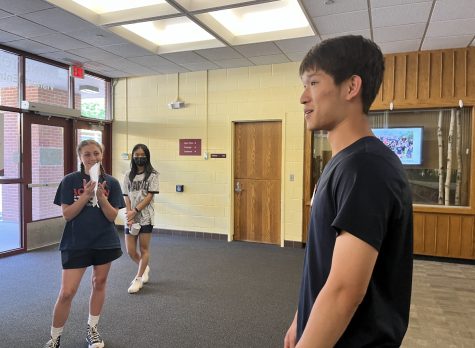Too long; didn’t read: The declining rate of reading among teens
December 18, 2018
Communication today comes in clips. We find ourselves increasingly surrounded by quick status updates, never-ending newsfeeds, and ten-seconds-or-less Snapchat photo messages. The society we live in thrives on information that is provided instantaneously, or that requires less than a minute to read and absorb.
The popularity of reading long articles or reading in-depth into a topic is declining. The phrase, “too long, didn’t read,” may not be used in mainstream vernacular, but it’s certainly in the back of the minds of many generations today, especially millennials.
“The Internet is prioritizing efficiency with things like Twitter and brief status updates. Because we’re being bombarded with information, I am willing to say that people, in particular, teenagers, tend to feel that if they’re not getting information from 60 different sources in five minutes, then they’re not having a complete experience,” English teacher Jacob Silver said.
Our attention spans are limited
According to Silver, there is a growing tendency to drift towards sound bites of information, ultimately leading people to emphasize the quantity of information they receive over its quality.
This trend is further perpetuated by a behavior called ‘multi-screening’: essentially multi-tasking turned digital. According to Informationweek IT Life Executive Editor David Wagner, the average human attention span has dropped 25 percent in a mere thirteen years since 2000.
“Eight seconds is the current average human attention span. After that, we usually go looking for another stimulus… Social media, multi-screening and having instant access to our phones has created the need to keep feeding our brains. The next fix is just seconds away,” he said.
Many news sources have adapted to this new disposition, especially targeting the most popular online demographic: kids and teenagers. Snapchat, a photo-based instant messaging app, has based their platform off of the short attention spans of their users. ‘Snaps’ have maximum of ten seconds for viewing before the message disappears, and can be sent out to dozens of people with a single touch, or published to the user’s story for all of their followers to see instantly.
Popular media outlets and companies have also taken to Snapchat to curate their own streamlined versions of the news or pop culture topics. CNN, Cosmopolitan, ESPN, and even the Food Network upload daily Snapchat stories, cutting full-length articles and videos down to smaller, more digestible packages of information.
“I love Snapchat because I like to watch [plastic surgeon] Dr. Miami’s snapchat stories and it’s really interesting. I watch the Cosmopolitan horoscopes even though they’re always really rude to me,” junior Katrina Coffey said.
Technology may be responsible for the shift
But the popularity of Snapchat may be attributed to something larger and much more inherent than just a desire for quick-to-grab information. Many teachers and researchers cite an overarching changing trend in reading habits that extends beyond the realm of social media – and claim that technology and shifting attitudes towards information consumption has permeated the attitudes of young people and their tendency to read in general.
A recent Pew Internet Survey of nearly 2,500 teachers across the nation found that 87 percent believe new technologies are creating an “easily distracted generation with short attention spans,” while 64 percent say today’s digital technologies “do more to distract students than to help them academically.
“It’s ironic because students, when asked, claim that they want to take greater ownership of their education and not feel like their education is being handed to them. [But] that’s exactly what they’re stripping from themselves by not reading.”
— Jacob Silver
“These same teachers also say that the Internet and digital search tools have had a “mostly positive” impact on their students’ research habits. In another study by Common Sense Media, teachers say that when it comes to finding information and multitasking, students’ use of entertainment media has helped rather than hurt them,” Graber said in a 2014 Huffington Post article.
According to Graber, parents also have a major influence on their children’s reading habits as compared to their technology usage. English teacher Kaitlin McIntyre agrees, and notes that the reading habits that children develop at an early age, which tend to stick with them throughout their lives, are formed based on reading habits fostered at home.
“Do kids see their parents reading? Because seeing adults reading as [children are] growing up is a really important factor in developing their own habits about reading,” McIntyre said.
These childhood reading trends can be based off of things like the presence of a home library or having parents read to them, among others. Of 254 students surveyed at the high school, 73% had parents or older siblings read to them frequently when they were younger, which correlates with the 72% of students who claimed they read for fun as children.
But despite a childhood love for and emphasis on reading, the passion for it diminishes beginning at the age where students are assigned required reading. To many individuals, it seems as though once a responsibility or expectation is placed on what was once a enjoyable past-time, the love for the subject disappears. Educators for some time now have sensed a growing reluctance from students to complete assigned reading material.
The trend has been visible with school reading assignments as well. Educators for some time now have sensed a growing reluctance from students to complete assigned reading material.
“I think that we should have free choice in a book instead of reading the one assigned to us because some of the books we read aren’t interesting and that causes me to not want to read them, which leads to [the use of] Sparknotes and other websites,” junior Bruno Caruso said.
Some teachers believe they struggle to engage students in books because they don’t provide the same rapid-fire stream of news and information that students have grown up thriving upon.
“[Being bombarded with information] prioritizes quantity over quality. [That] is exactly the opposite of what a book does, which is to try to pack a few really big, deep, ideas into a long period of time – which takes away from the amount of time that you could be processing a ton of different information [from the Internet or social media],” Silver said.
In a similar way that social media platforms have adapted to provide information on a more efficient method, other online sources use similar methods. Online resources such as SparkNotes, CliffNotes, and BookRags have led to a decrease in need for students to spend time reading the words on the paper. When accompanied with the already present attitude of teenagers preferring quick and easy-to-find information, supplemental “reading help” sites further the decreased need to read books.
“I use [supplemental sources] occasionally if I need to, because sometimes there is a chapter I don’t read in a book and it’s the quickest resource to use,” sophomore Mike Mello said.
Some online sources can be supplemental to student work, however, there is a line as to what is acceptable. These alternative resources can be great ways to understand other perspectives of a text, but reading the text itself is still the best way.
Sparknotes’ mission, which is posted on their website, also draws the line between help and plagiarism: “Our mission is to help make sense of confusing schoolwork. We’re here to help you learn, not to help you cheat. Our literature guides are meant to be read along with the books they analyze. They are not intended to be copied or plagiarized. Our hope is that our analyses will help you draw your own conclusions about the work, and craft a unique opinion.”
Online resources should be used responsibly
But while Sparknotes and other similar resources can outline these rules for users, they have little power over how students are actually utilizing their resources – students must make that decision for themselves.
“It’s very controversial, you could use SparkNotes to help you gain a better understanding, but if you’re just being lazy and cheating, it’s wrong,” freshman Chantelle Otu-Appiah said.
Silver views online “reading help” resources as more harmful than helpful to a student’s understanding and learning.
“It’s ironic because students, when asked, claim that they want to take greater ownership of their education and not feel like their education is being handed to them [But] that’s exactly what they’re stripping from themselves by not reading. By just accepting the interpretation that’s been handed to them rather than interacting with the text themselves, they are denying themselves the opportunity to take ownership of their own learning,” he said.
“I love how books can be interpreted in so many ways and how it can be so personal to people, even though it’s one that thousands of people read. Whenever I read, feel like I learn something about myself,” junior Hannah Borgida said.
Silver hopes that students continue to make the effort to read and interpret books and other assigned material in order for them to get the best learning experience out of it.
He said, “When asked what did you consume that changed your life, I think most people would say a book and not a tweet or a quote. It takes a book to change a life.”









